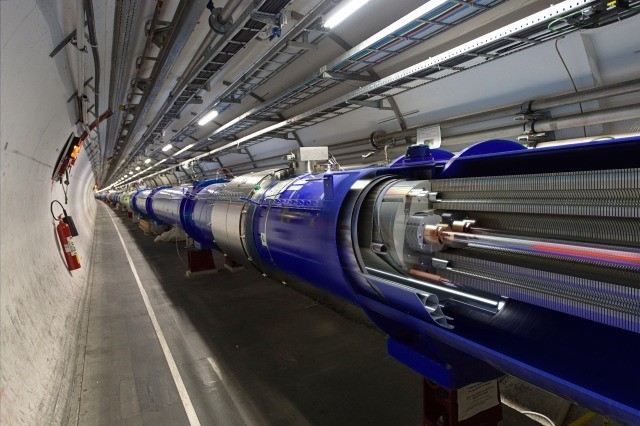
There is some good news waiting for the air travellers. They’ll soon be able to walk through airport security without having to separate liquids and gels in their hand baggage. Thanks to the new upgraded computerised tomography (CT) scanners that can detect explosives without going through a separate screening for the liquids and gels.
This discovery was widely publicised and lauded as a lifesaver for both travellers and security staff. But what was less frequently noted in those reports is that this advancement was made feasible due to the insights gained from the development of particle accelerator physics.
The bright and novel concepts and technology of particle physics have penetrated the mainstream of society to revolutionise our lives, from the first days of high energy physics to the recent times.
A broad and rising list of useful practical applications with contributions from particle physics can be seen in medicine, homeland security, industry, computers, science, workforce development etc. Noted below are a few such examples.
Medicine:
- MRI: Magnetic resonance imaging (MRI) is a basic medical diagnostic technique that employs superconducting magnet technology, which was developed by scientists to accelerate protons to the maximum energy possible. Based on nuclear magnetic resonance principles, MRI creates high-quality images of the inside of the human body. Powerful magnets composed of superconducting wire and cable are at the heart of MRI technology. This technique was first created to build Fermilab’s Tevatron, the world’s first superconducting synchrotron, by a team of professionals in superconductivity, physics, engineering, material science, and manufacturing.
- Cancer Therapy: Particle physics technology has resulted in significant advancements in cancer treatment. Accelerators that produce x-rays, protons, neutrons, or heavy ions are used at every major medical centre for illness diagnosis and treatment. Proton therapy, in comparison to x-rays, has significant therapeutic benefits, particularly for young patients. In the 1950s, medical linear accelerators for cancer therapy were developed at Stanford and in the United Kingdom using techniques developed for high-energy physics research. This innovation leads to a new industry and countless lives were saved. According to estimates over 7,000 functioning medical linear accelerators have treated over 30,000,000 people around the world.
Computing:
- The World Wide Web: The World Wide Web was created by particle physicists to allow them to connect rapidly and effectively with peers all around the world. Tim Berners-Lee, a CERN scientist, created the World Wide Web to allow particle physicists to interact seamlessly with colleagues at universities and laboratories all around the world. This breakthrough has a massive impact on the global economy and societal ties that few other innovations can equal.
- The Grid Computing: Particle physics experiments generate massive volumes of data, which necessitates the use of cutting-edge computing equipment. The Grid is a revolutionary particle physics computing platform that combines the power of hundreds of thousands of separate computing farms to allow physicists to manage and process unprecedented volumes of data around the globe. Medicine and finance are two examples of industries that create vast volumes of data and can benefit from improved computing technologies. To process this large volume of data, particle physicists took advantage of the computers located all around the world and build a virtual supercomputer – making it the latest computing machine for the particle physicists
Industry:
- Biomedicine and drug development: The role of protein in biological processes is paramount. Thus, to find the root cause of diseases we need to identify the responsible protein and understand its structure. This process is the prerequisite for any drug development. The technologies used for particle physics experiments are proving to be of great help in this endeavour of analyzing the protein structure.
- Power Transmission: With the advancement of accelerator technology, significant progress has been made in the area of superconducting materials. Now, these innovations are being applied in the sector of power transmission. The advantage of using superconducting materials over the conventional wire results in transmitting more electricity while keeping the power losses at a minimum.
To summarize, we can say particle accelerator research and development has fuelled innovation for over a century. As a result, applications with huge societal benefits have emerged. A brighter future is on the horizon.
References:


